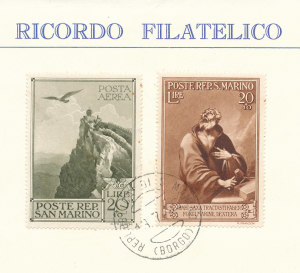
There are an increasing number of philatelocracies-countries that exist largely to issue stamps and whose independent political status is made possible by the revenues generated by the sale of philatelic items. There are scores of philatelocracies now-places like the Grenadines of St Vincent or Guernsey- places which exist because of sales of stamps to collectors. Today, they are largely smaller islands or political subdivisions of larger nations. In the late Nineteenth Century, philatelocracies were even more common. Many of the French and Portuguese African issues of the 1890-1915 period which comprise thousands of issues from scores of fragmented geopolitical units existed largely to sell stamps to collectors. The original philatelocracy was San Marino. Nestled in the Apennines, San Marino the oldest nation state in the world tracing its independent origins to the fourth century. It is 25 square miles and has a population of about 30,000 and up to 1960 had issued over 2000 different stamps. On a per capita basis this is 65 unique issues per thousand inhabitants, which if the United States had followed the same promiscuous issuing policy would have had our nation issuing twenty million unique stamps. San Marino has always enjoyed great philatelic popularity and really has been grandfathered into philatelic acceptance. Grandfathering in philately works like this-stamps that our grandfathers felt deserved a black blot for philatelic inappropriateness our fathers didn’t much mind and we collect avidly. In three generations these stamps go from disapproval to popularity. By this standard, our grandchildren will seek avidly the Bhutan record stamps.
Shopping Cart
